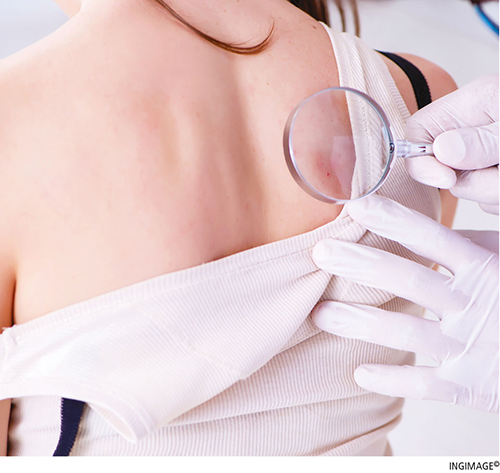EXECUTIVE HEALTH
A RASH OF DECISIONS
BY Dr. Sanjiva Wijesinha
Skin rashes are a common condition that most of us have experienced at some point in our lives. It is important to understand that the word ‘rash’ does not allude to a specific illness or definite diagnosis; it’s merely a symptom (some tangible change in your body that you experience) that could be caused by one of many different diseases.
Rashes, fever and coughs are symptoms rather than diseases so treatment for the disease responsible for that particular symptom could be different depending on the underlying cause.
While describing the many different types of rashes that affect human beings is beyond the scope of this column, it’s useful to know about the more common types that can affect us.
ECZEMA Sometimes referred to as atopic dermatitis, eczema is probably the commonest type of rash that compels patients to seek medical help. It is more common in children, manifesting as red itchy rashes that usually appear on the neck, cheeks, wrists and ankles, but most commonly on the flexor areas of the knees and elbows.
It is a result of the skin being sensitive or allergic to some chemical substance or irritant with which it comes into contact. Eczema is more commonly seen in patients who have asthma and hay fever or others with immediate family members who have such ailments.
The allergic reaction could also result from coming into contact with certain plants or substances like washing powder or paints, or even jewellery like chains and watches that contain metals such as nickel. Certain foods (like pineapples and prawns) or medicines (such as certain antibiotics) can also trigger rashes.
Nappy rash is another form – it is a rash that is a result of babies being in the same nappy for so long that urine and faeces remain in contact with the tender sensitive skin to irritate it.
INFECTIONS Often, rashes can be a feature of infections – serious bacterial infections like meningitis, less serious viral infections such as chickenpox or measles, common and highly contagious parasitic infections like scabies, as well as local fungal infections – e.g. ringworm and athlete’s foot. These rashes are treated differently and once the infection is controlled, the rash resolves.
In the case of rashes caused by a fungal infection, knowing how to prevent them is important. These fungal rashes tend to develop in parts of the body that are warm and moist – so sweaty regions like the groin, armpits, under the breasts and between the toes are very vulnerable.
Once an antifungal cream or ointment is used for several days to get rid of the fungi, the affected area must be kept dry. So make it a point to wash the area regularly and then dry thoroughly. Wear clean dry socks and underwear rather than those that you’ve sweated into all day.
An accurate diagnosis of a skin rash usually requires an assessment by a healthcare professional. If you choose to treat a rash yourself because you’re confident that you know what caused it and what resolved it in the past, you can initiate treatment with over-the-counter medications that one can buy from a pharmacist.
But if the rash persists despite your treatment or should it be associated with a fever, it’s advisable to consult your doctor who would be the best person to make the right diagnosis.




